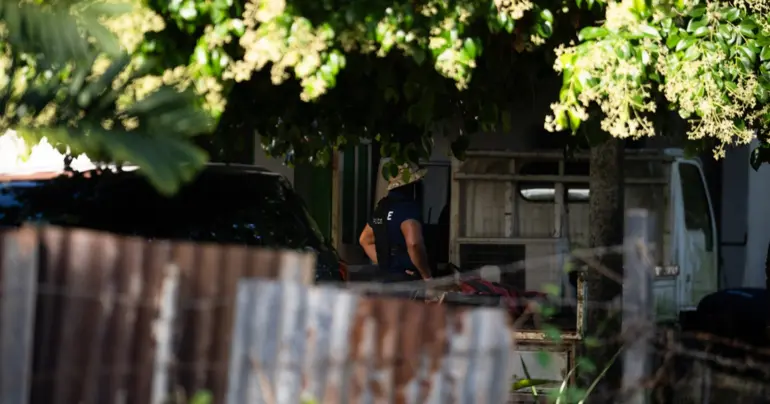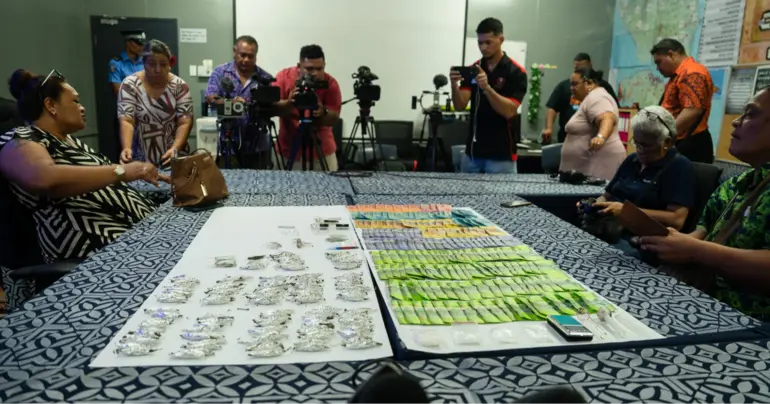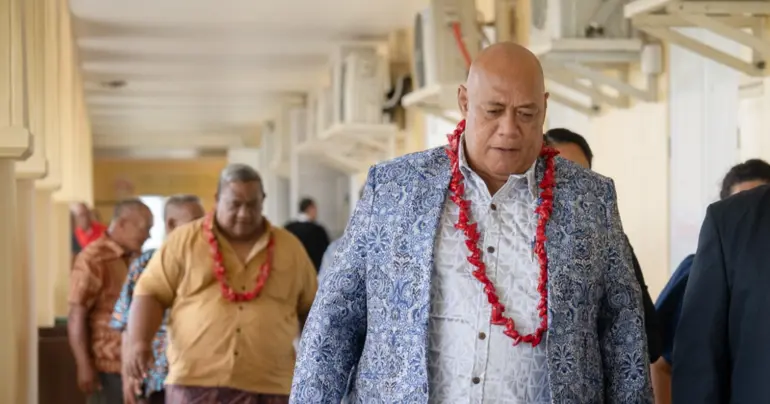South Aucklanders priority in Covid vaccine rollout
 By Sapeer Mayron
•
01 March 2021, 12:00PM
By Sapeer Mayron
•
01 March 2021, 12:00PM
Majority of New Zealand’s border force vaccinated so far against COVID-19 are from South Auckland’s Counties Manukau, with the rest of the border community to follow.
Prime Minister Jacinda Ardern on Sunday confirmed that the South Auckland community is on the top tier of priorities for vaccinated groups, given the large representation of border workers in the area.
“The best way that we can protect the South Auckland community of course is to make sure we don’t have any incursions at our border which is why we have prioritised the border workforce,” she said in a press conference.
“Of those who have been vaccinated to date I am advised that 75 per cent have come from within the Counties Manukau District Health board, so that tells you that essentially we are vaccinating a South Auckland population by virtue of the workforce we are vaccinating.
“They remain a priority because if we manage to put that extra layer of protection at our border the likelihood of cases like this significantly reduces – it’s not eliminated, but it reduces.”
Her comments come amid rising concern for the South Auckland community to be vaccinated ahead of other at-risk groups, as the city goes into a second Level 3 lockdown and this time for a week.
Ms. Ardern said Cabinet will continue to assess who will be vaccinated after the border workers and their families, but said by default, South Auckland for its level of exposure to the virus, will be a priority.
“But when we’re in the situation of generally vaccinating, the general population, my expectation is that South Auckland is where we will start and for very good reason,” she said.
“We have always said that we expect around the middle of the year to be able to undertake a general vaccination programme and it makes absolute sense that we would start in earnest a vaccination programme of that nature in an area such as South Auckland because there is that higher risk there for multiple reason.”
Earlier on Sunday, New Zealand’s pandemic response minister Chris Hipkins confirmed the same. Speaking to TVNZ’s Q&A programme, he said the area is clearly more at risk than others.
Following the frontline workers rollout that is currently ongoing, the next doses will likely go those with health conditions and the elderly, also at more risk of severe infection, he explained.
“Clearly, South Auckland is located by the big airport where most of the people are coming into the country from,” Mr. Hipkins said.
“Clearly, that [South Auckland] is a setting that probably is a bit more at risk. I think you will see that reflected in the vaccine rollout plan.”
On Saturday night, Ms. Arden announced Auckland would go back into a Level 3 lockdown for seven days as the latest community cluster grew by two cases, that until genome sequencing was conducted, could not immediately be linked to the original cluster.
It comes after a three day lockdown was lifted earlier in the week.
The population of South Auckland is approximately 260,000 strong. Around half are of Pacific descent.
National Party leader Judith Collins wants South Aucklanders vaccinated early.
She said South Auckland homes have higher density, with a greater proportion of people working in border facilities and rest homes too.
“We need to be realistic here and we need to say 'South Auckland does need something', and that something special happens to be vaccinations."
Manukau ward councillor Faanana Efeso Collins said vaccinating the population would ease rising anxiety in the region.
“We've seen the outbreaks happen in South Auckland so it would make real sense for the community of South Auckland to be offered the vaccine as a group of priority persons,” Fa’anana told Radio New Zealand.
And Auckland Mayor Phil Goff has said he already expects the health authorities to consider South Auckland’s higher risks.
“Because we are the gateway and because we have the highest number of quarantine facilities and we've had the highest number of level three restrictions, that does put the region at greater risk. I would expect the health authorities to take that into account.”
Asked about the issue earlier this week, Mr. Hipkins said considering the number of South Aucklanders already working on the frontlines of the COVID-19 response, many will be captured in the first roll-out.
“The airport is at South Auckland and a lot of the people who are working in those jobs live in South Auckland and so them and their families are going to be very highly represented.”
Currently New Zealand does not have the necessary stock of vaccines to rollout to large groups, and is starting with the 12,000-strong force of border workers.
The Pfizer/BioNTech vaccine New Zealand is using has logistical challenges. District Health Boards have been collating “standby” lists of people who should be available to get the vaccine in order to not waste doses.
If a dose of the vaccine reaches above -70 it will expire in five days, the Ministry of Health has explained.
And once it has been removed from the fridge, it must be mixed within two hours, and used within six hours.
“New Zealand’s border and MIQ workers are our first line of defence – that is why we need to protect them and the families they live with first, with the vaccine roll-out,” an M.O.H. statement said.
“However the requirements of keeping the border and our MIQ facilities fully operational 24/7 means that only part of that workforce can be freed up at any one time.
“The vaccine is a precious commodity and its special properties present challenges different from our usual vaccines.
“Our goal is to make our vaccination process as efficient as possible to ensure the best use of the vaccine available.”
The standby lists around local immunisation centres include frontline hospital staff and community healthcare workers like Maori and Pacific primary care providers, and staff at the community testing centres.
National Party health spokesperson Dr. Shane Reti said the immunisation priorities should include areas with high deprivation figures, including overcrowding.
“I think those areas that are at high deprivation index should be the areas that are preferentially vaccinated, regardless of your ethnicity, solely on the basis that over-crowding increases the risk of transmission and these are the overcrowding areas - that's South Auckland.
“[It's] really good that border workers are going to be vaccinated, a statement of fact that a majority will be Māori and Pasifika and they will go home into their South Auckland community and them and their families will be safe [but] they're a small proportion.”
According to the Auckland Council, New Zealand's 2018 Census recorded 243,966 people or 64 per cent of New Zealand's 381,642 people with Pacific heritage living in Auckland. And out of that total 118,503 people with Samoan heritage lived in Auckland.
Tags
 By Sapeer Mayron
•
01 March 2021, 12:00PM
By Sapeer Mayron
•
01 March 2021, 12:00PM











